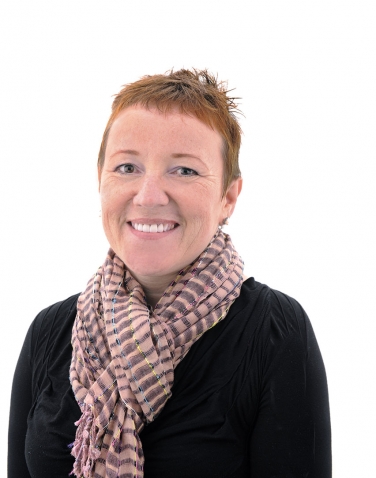Photo by Richard Howard
As Catia Confortini lay in bed one night this spring, thinking about the next day’s class on noncommunicable diseases for her course, Global Health Governance, she had a sudden change of heart. “I thought, ‘Why am I teaching this right now when we have a global pandemic coming on?’” says the associate professor of peace and justice studies.
It was Monday, March 9. Although the United States was still carrying on with business as usual, Confortini had already watched her family, who live in the Lombardy region of Italy, go into full lockdown in response to the outbreak of the COVID-19 virus.
“We are living through something that was predicted but no government took seriously—or not seriously enough,” she says. “I thought there is no better moment to study a global pandemic than when a global pandemic is happening.”
She woke up at 5 a.m. the next morning, still thinking about the course. “I went to the classroom, and told the students: ‘I think we need to study this together. How can we do it?’” she remembers.
Originally, the course had dealt with how governmental and nongovernmental groups address health challenges, particularly those that impact the poor, such as HIV/AIDS, Ebola, tuberculosis, and maternal mortality, to name a few. Now here was a health challenge that would affect everyone on the planet.
Confortini and her students spent that class session reimagining what a course devoted to an unfolding pandemic would look like, with the students actively participating the redesign. Going forward, the students would work in pairs instead of individually— “so they wouldn’t feel isolated,” says Confortini. Their readings would come from as much from each day’s news as it would from academic papers and textbooks. With help from the staff of the Pforzheimer Learning and Teaching Center, Confortini and her students reconfigured the second half of the semester to focus on different countries’ responses to COVID-19.
That day turned out to be the last time the class would meet in person. Later in the week, the College sent students home. For the rest of the semester, they came together once a week on Zoom, with a second meeting devoted to working in pairs. Confortini wrote an article about what she has learned teaching global health during the pandemic, which she recently published in University Affairs.
Another thing changed, too: Though physically farther apart, the students reported that they felt closer than ever. “Emotionally, it’s really hard,” she says. Many students have parents who are front-line health-care workers. Some started to see people they know fall sick and even die. The beginning of each class was spent checking in on everyone’s personal well being.
Although much about the course changed, Confortini’s goals for the students did not. “I care less that they learn in nitty-gritty detail about how the WHO works and more about how we work together in a world that is changing around us,” she says. “How do we establish this spirit of collaboration rather than competition with each other?”
Wellesley students can be extremely competitive with one another, Confortini says. However, there was no place for competition in this class: The students’ final project was a group project, which was peer-assessed. “I want them to see how this ethos makes no sense among each other, and it doesn’t make any sense in the world. In a pandemic, you have to come together and collaborate, and they are doing that now in the classroom.”





We ask that those who engage in Wellesley magazine's online community act with honesty, integrity, and respect. (Remember the honor code, alums?) We reserve the right to remove comments by impersonators or comments that are not civil and relevant to the subject at hand. By posting here, you are permitting Wellesley magazine to edit and republish your comment in all media. Please remember that all posts are public.